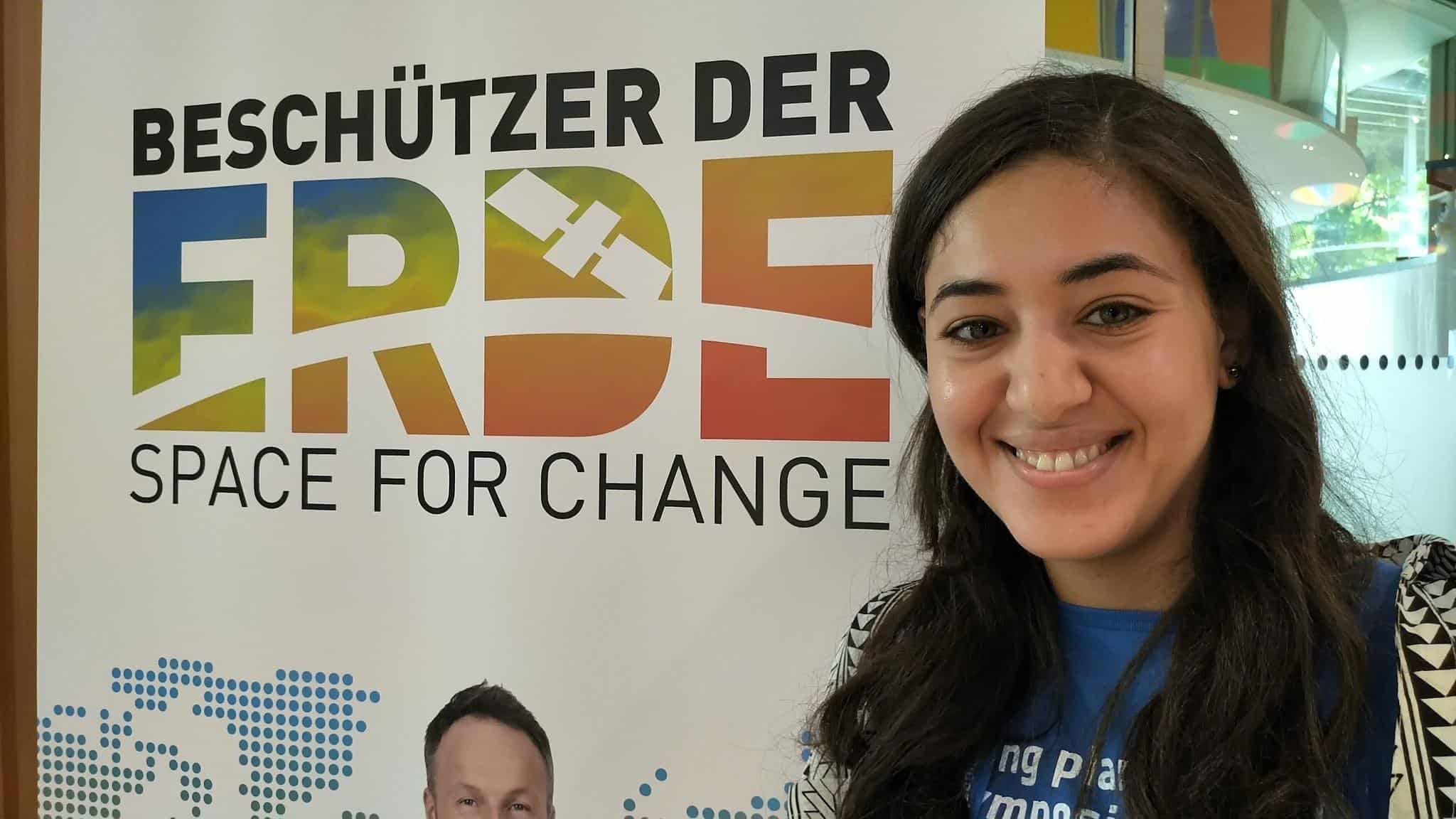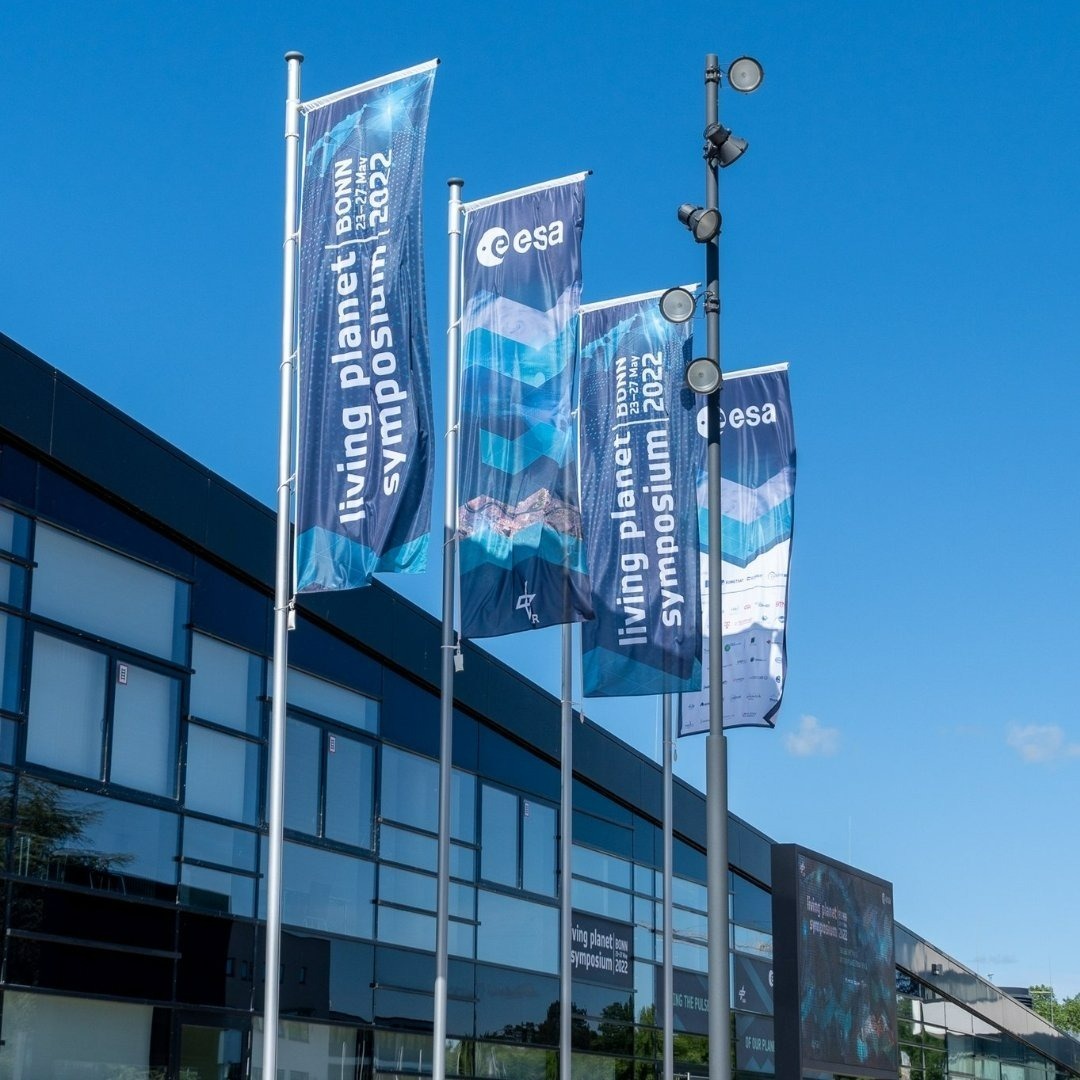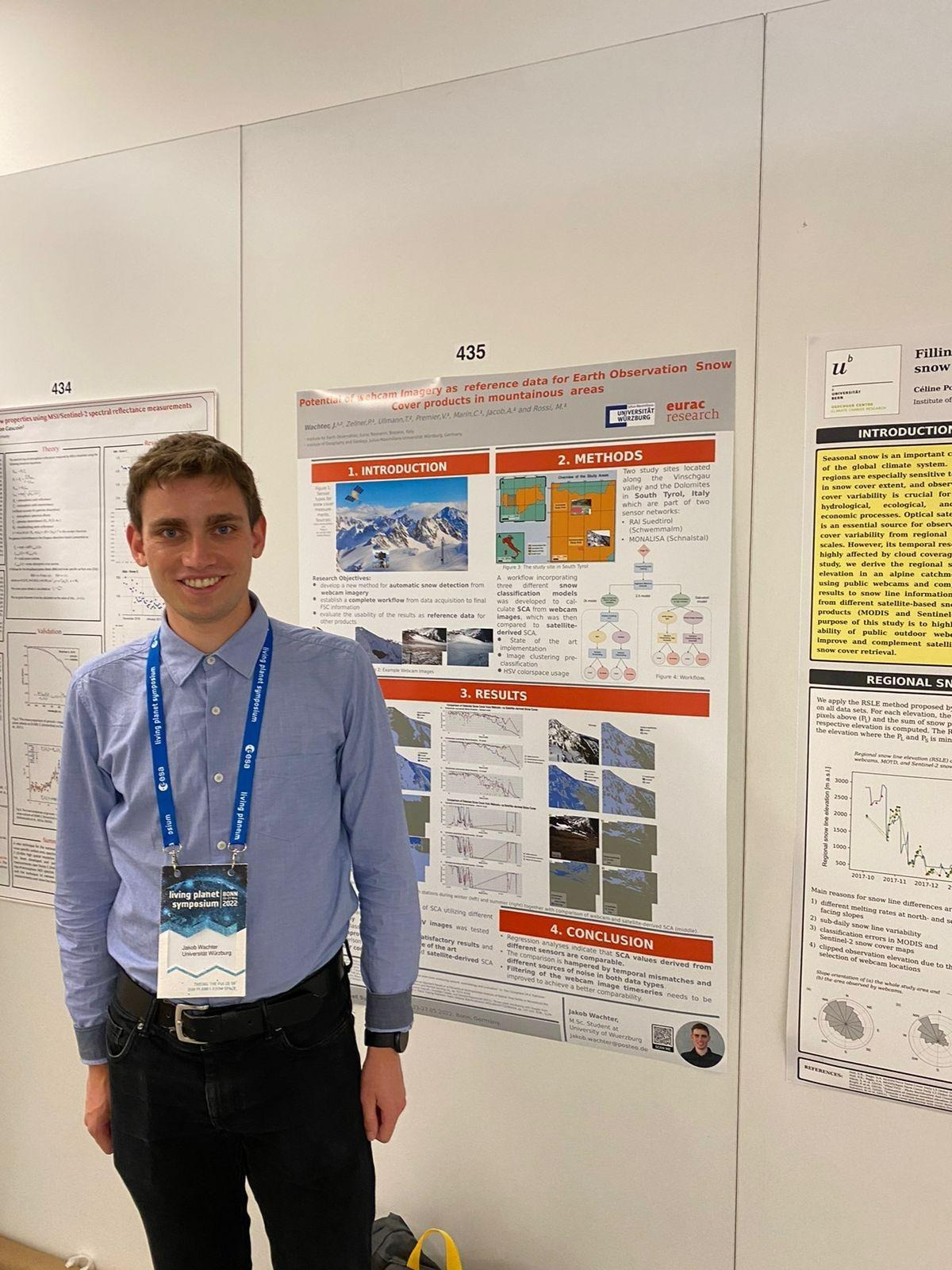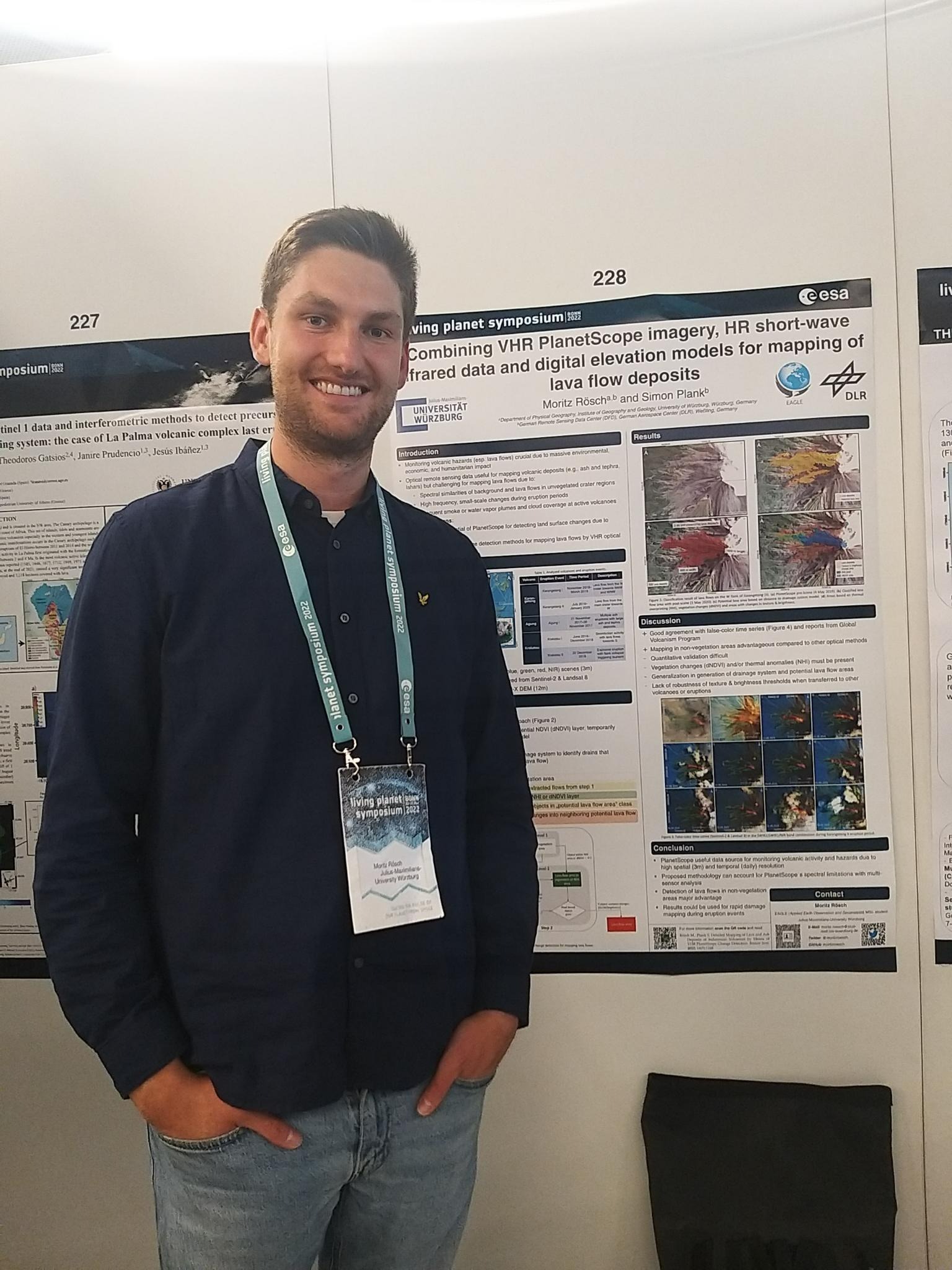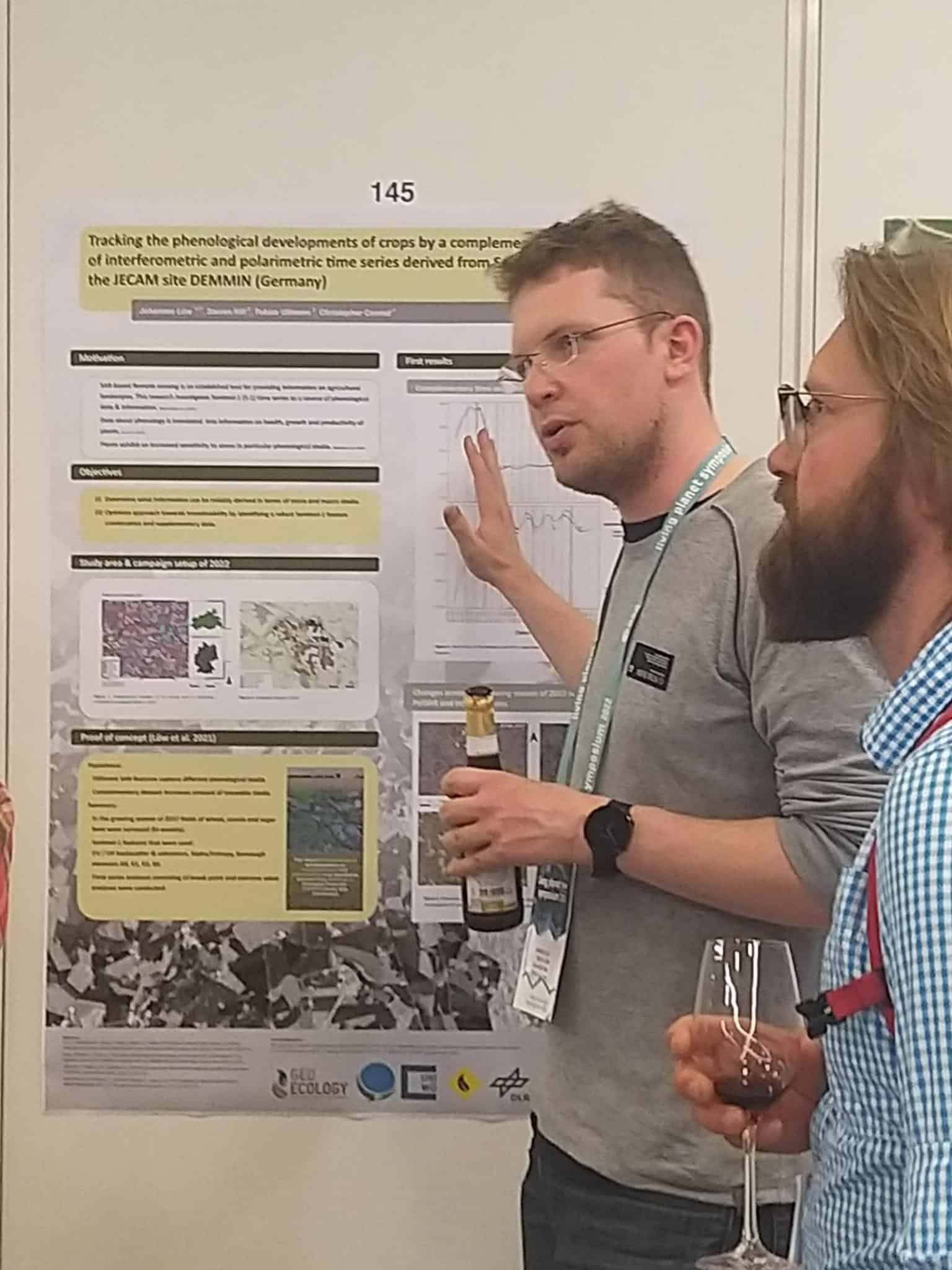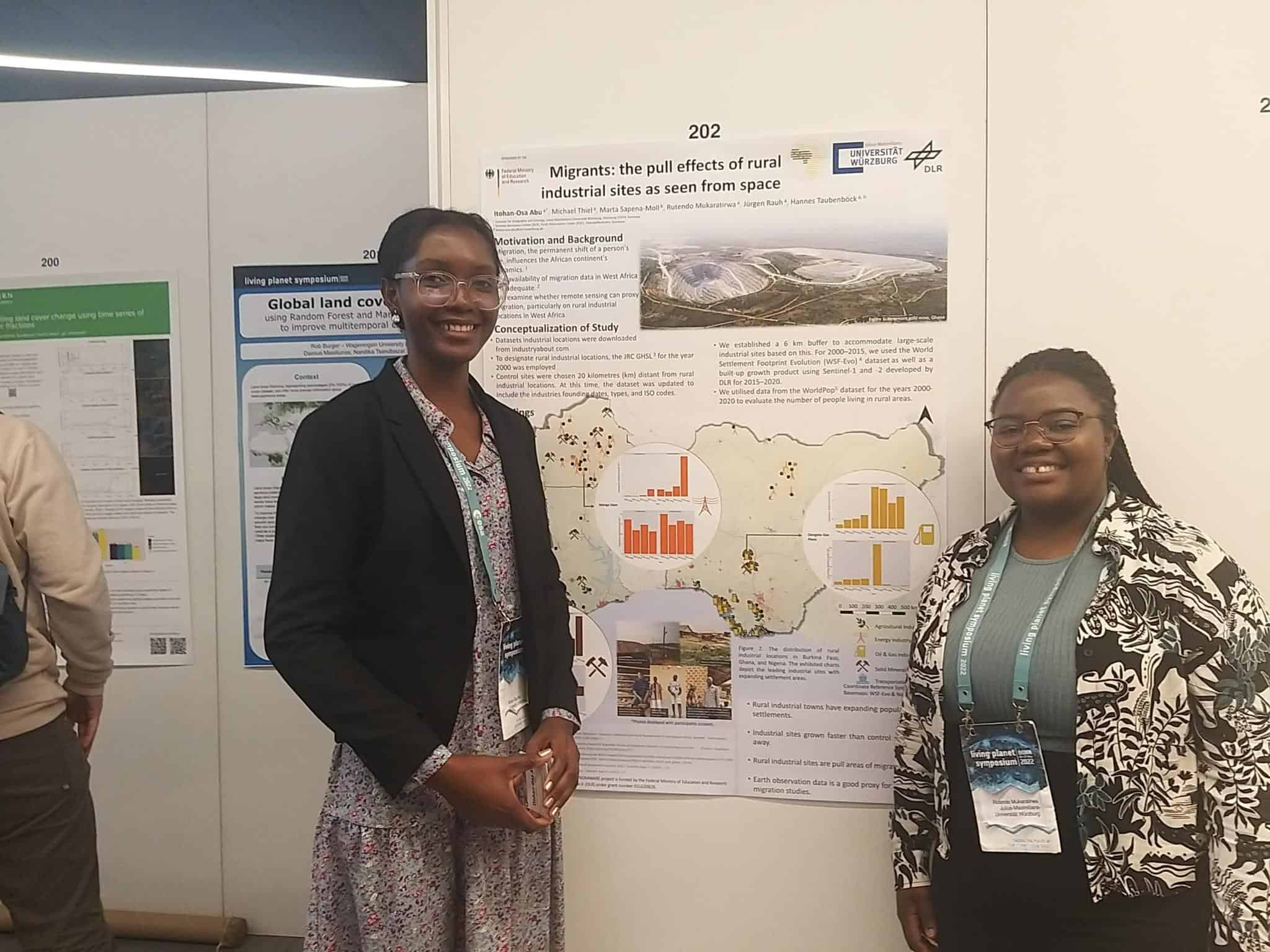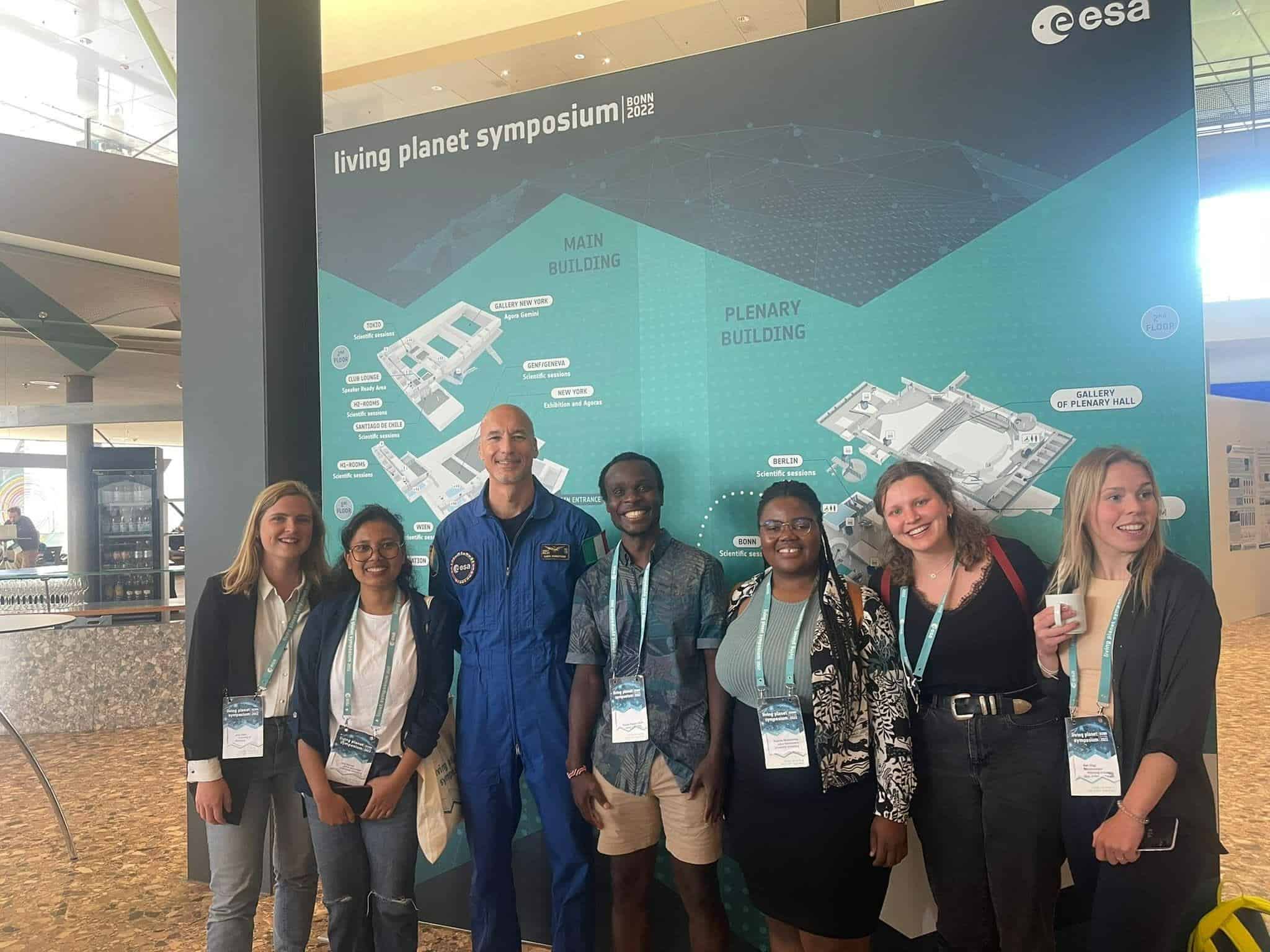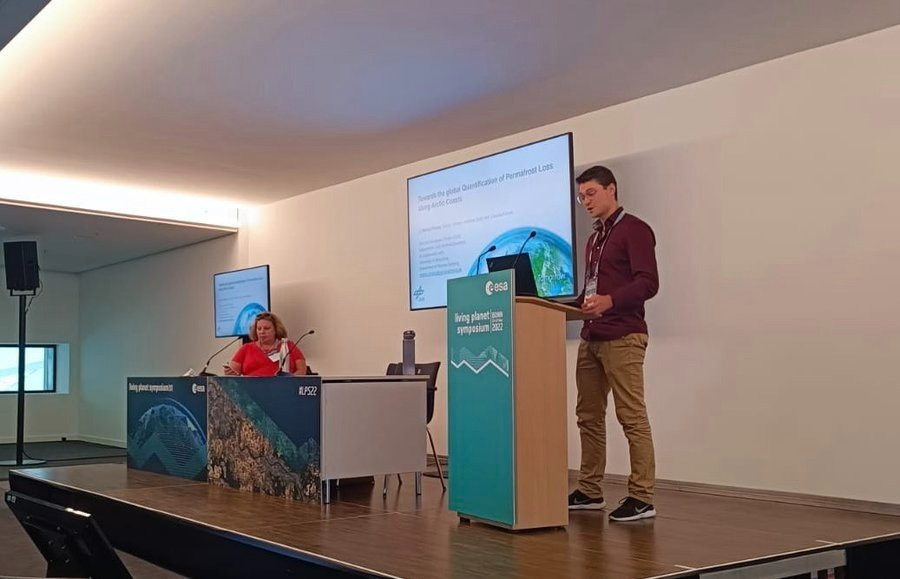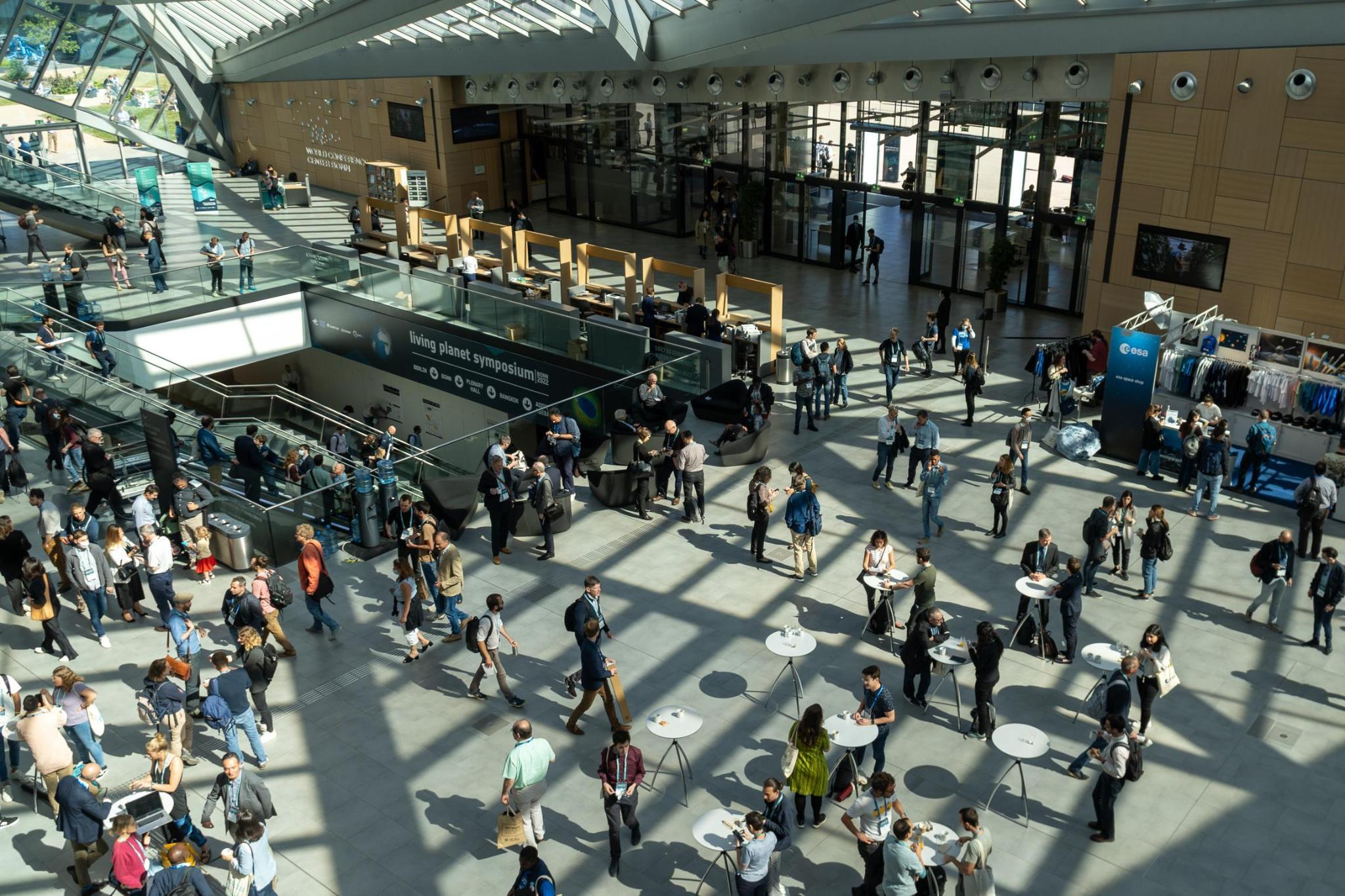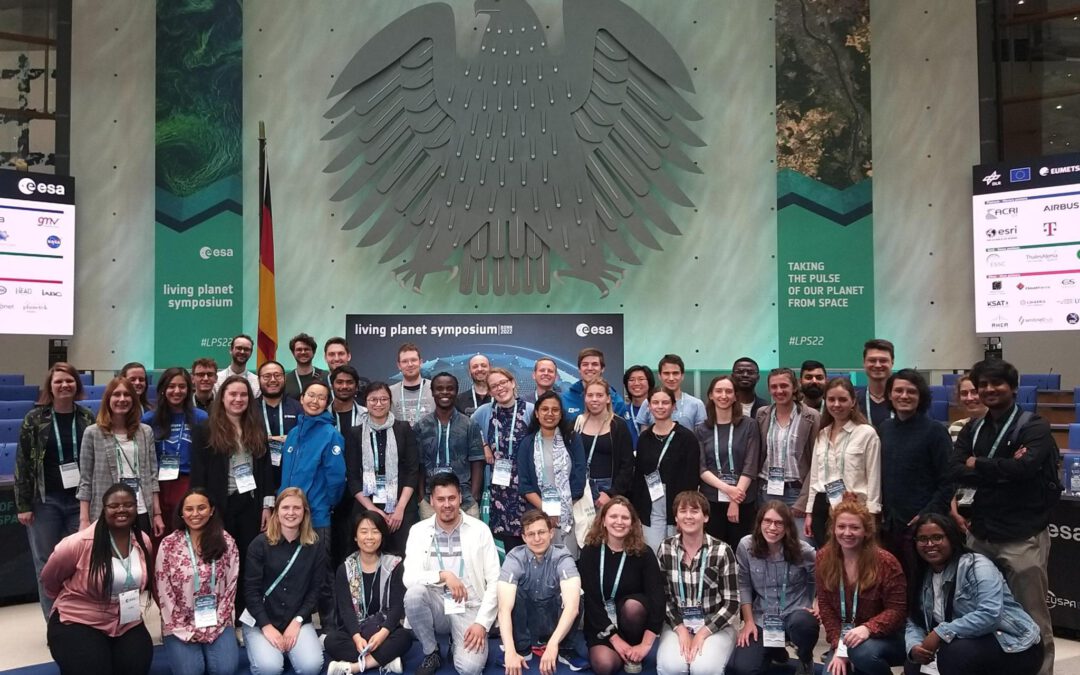It was a huge week filled with talks, posters, and lots of networking sessions for the EAGLES at ESA Living Planet Symposium 2022. The whole week was arranged for the symposium with no courses taking place, which showed how excited the EAGLE staff and students were for Bonn-The city of Joy!!
Moreover, EAGLES not only attended the symposium but also were active participants in various talks, poster presentations and volunteering. Most of them arrived one day prior and settled themselves ready to acquire all the knowledge on remote sensing applications and related topics.
Day 1 was the most exciting and overwhelming for everyone with the grant starting ceremony in the Plenary hall of the World Conference Center where Joseph Aschbacher (Direct General -ESA), Simonetta Cheli (Director ESA-EO), and various famous personalities welcomed the whole EO community to the event. It was obvious that Astronaut Alexander Gerst stole the event with his talk on his experience with the first space flight. In addition, it was a delight to see the Bundestag eagle in the Plenary hall where every EAGLE student dreamed of a picture (which they did take).
The whole group was split up to attend the various talks of their interest happening in more than 15 venues in the World Conference Center. The decision of choosing between certain talks of interest happening at the same time might have been the toughest task for everyone in the symposium. The first day was a trial run for everyone trying to locate venues and meet people. By the end of the day, the realization did hit everyone on the vast possibilities lying around for them in Earth observation and remote sensing.
Stepping into day 2 the EAGLES were prepared to meet some people and timed their talks to attend. The networking sessions like women in geospatial provided them the opportunity to meet, discuss and explore opportunities in various topics with various international women in geospatial. There were more than 100 talks happening consequently on EO topics in different sessions like Agora session, Plenary Session, Science for society, scientific session, open earth forum, etc. Day 2 was much more exciting to some other EAGLE students and staff with their talks and posters. The old EAGLE Christabel Anash and Ph.D. candidate did a talk on her master thesis work on assessing the environmental impact of oil spills in the Niger Delta, Nigeria. Marius Phillip, the Doctoral student, and lecturer at the department talked about his excellent work on trends in earth observation on permafrost-related analysis. Sebastian Buchelt, also a lecturer and Ph.D. candidate, talked about the application of high-resolution SAR data on snow cover depletion. Dilara Kim who is recently interning at EURAC was delighted to present her ongoing work on glacier meltwater contribution to river run-off by snowline observations using satellite data. Insa Otte, one of our lecturers at the department, gave a talk on data cubes for land degradation.
The poster session was very interesting with the vast variety of research topics on remote sensing application topics, it was also the best way to network with the researchers involved. The EAGLES were also active in the session with the Machine learning approach of Locust Swarm Prediction by Kai Hei Chow and Analysis of social media data on migration in West Africa by Johannes Mast. Seeing them present the poster and talks was an inspiration to the new EAGLES to reach the same potential in the future.
On day 3, EAGLEs already made some connections with their field of interest and got new insights on the same. Still pumped up for more knowledge and networking the EAGLES went with the day with talks on advanced future technology for EO, understanding the Earth system, GEO, Green Transition, Earth observation digital transformation, and public-private sector partnerships in scientific sessions and application in agriculture, cryosphere, forest monitoring techniques, risk and disaster, oceanography, radar topics, etc. in other sessions. Every day LPS covered ground from science, and application to partnership for long-term uptake and collaboration as said by the Head of ESA sustainable initiative. For some this day marked an inspiring experience meeting the astronaut Luca Parmitano, watching his Gorner glacier expedition documentary also listening to his interview, cryosat mission Geophysicist Alexandro Di Bella and Extreme ultra cyclist Omar Di Felice who biked to Bonn from Italy. Still, the participation of old and new Eagles for presentations and posters was notable. Itohan-Osa Abu, PhD candidate at the department presented her work on migration and a poster for the same with Rutendo. Jacob Watcher, presented an interesting poster on his work on the potential of webcam imagery as reference data for EO snow cover products. As well Johannes Löw had his informative poster on crop phenology with interferometry and polarimetric techniques. Magdalena Halbgewachs, old EAGLE and Research assistant at DLR presented and discussed ideas in a networking session on linking the space and disaster management community. The lecturers were also joining in the poster session with their noteworthy work, especially Tobias Ullmann´s poster on analysis of surface dynamics using optical and radar data.
Apart from that on this day, the staff and students managed to meet for a relaxed evening with games and drinks at the accommodation which was a fun and time-out experience in between the busy schedule.
Day 4 was exhausting at least for some with hectic schedules of the whole week, however, they stayed strong enough for the day as they knew this was the exact platform that allowed them to meet the experts and stakeholders from all around the world in EO. The dynamic sessions in almost all remote sensing and Geospatial analysis had already been covered in LPS22 within these 4 days. And the EAGLE by now also was introduced new techniques, trends, and research breakthroughs in various fields. On this day the new generation EAGLE Moritz Roesch presented his poster on mapping lava flow deposits using VHR Planetscope imagery. On the other hand, the old EAGLE Sandro Groth and research assistant at DLR shared his work as a poster on global seasonal and permanent reference water products for improved flood mapping using satellite products. Interestingly this was the day the EAGLES managed to capture the group picture in Plenary hall behind the huge Bundestag EAGLE, which obviously was the most memorable event to see all the generations and staffs coming together under the wings of the huge EAGLE.
On the last day, almost everyone was prepared and packed to leave the symposium, some of them had to leave early before the closing ceremony and some managed to finish it off with the whole splendor. The team which had to leave early could only attend some of the talks. However, every EAGLE grasped everything in the given time frame with a will to learn and improve in the field. And everyone was very privileged to attend the whole symposium, most of them were inspired, intrigued, insightful, and equipped for the future of EO.
by Lallu Prathapan.
